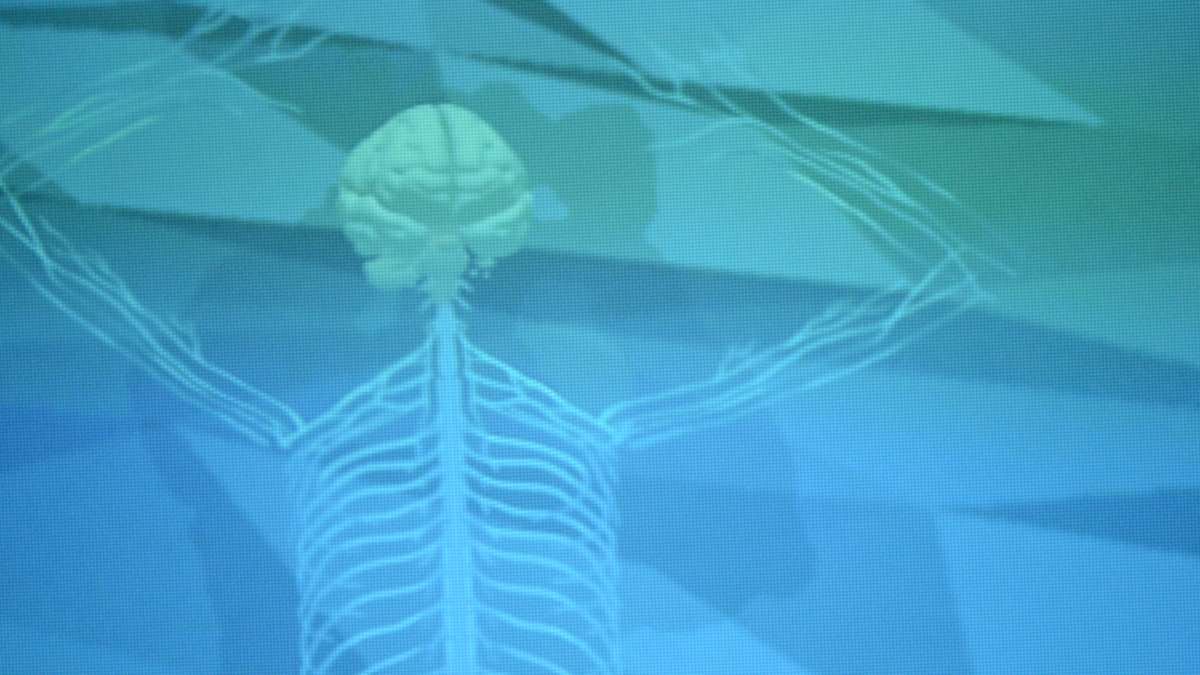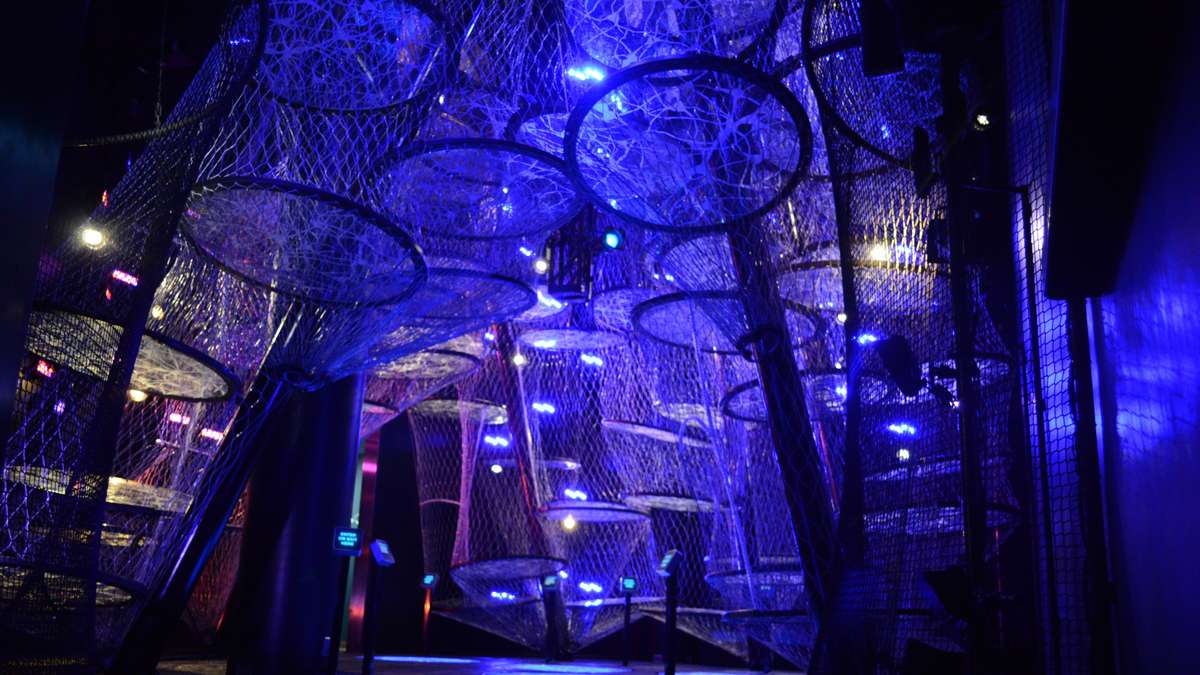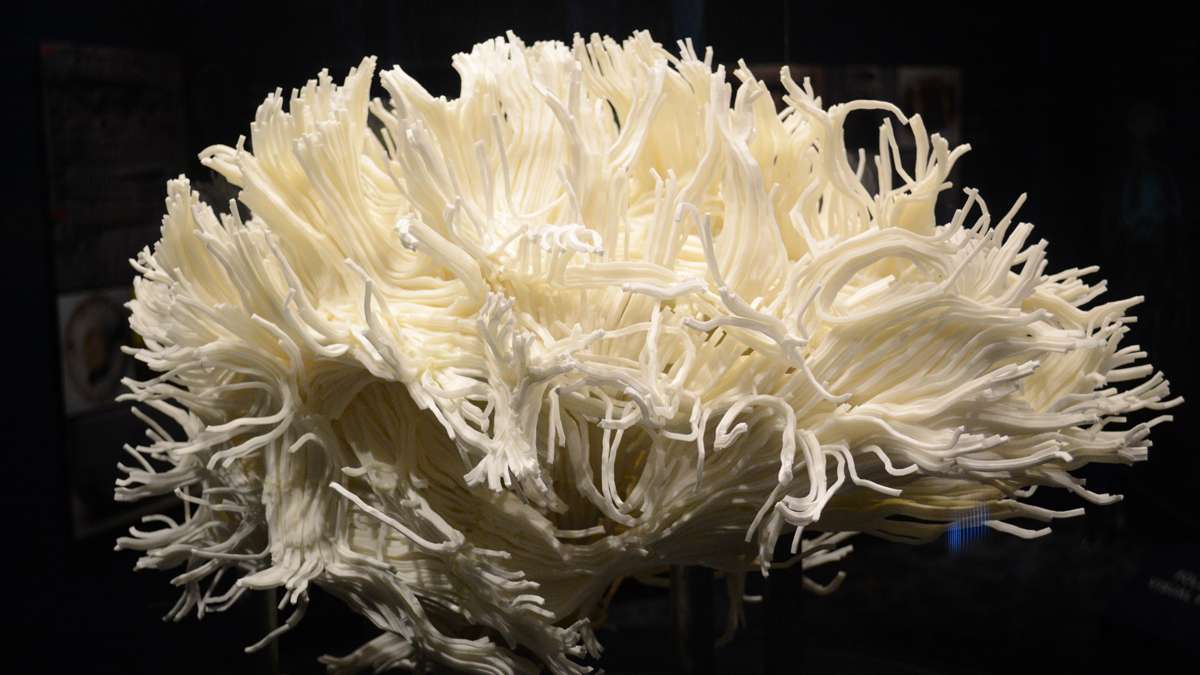At the Franklin, a tour of ‘Your Brain’
ListenPondering how you ponder, with the help of the Franklin Institute’s brand-new brain exhibit.
There’s a brand-new building at Philadelphia’s Franklin Institute that achieves a long-standing goal.
When the science museum was designed in the 1930s, it was supposed to take up a full city block. Just two sides were built then, a third came in 1990 and now a $41-million addition rounds out the full square.
The new building (hang a left at the big Ben statue) is anchored by what the Franklin Institute is calling the nation’s largest permanent exhibit devoted to the human brain.
It opens June 14, but we got this sneak peek.
A look inside
The Franklin Institute’s chief bioscientist, Jayatri Das, is showing us around the sprawling new exhibit. It’s called “Your Brain.”
“It’s not the brain, it’s not a human brain, it’s your brain,” she says. “In this exhibit you’ll be learning about how your brain creates the world around you.”
It’s meta like that.
The project has been in the works for seven years. “This exhibit has been inside the heads of the exhibit team for so long that we’re really excited for it to be a physical reality and to really watch people use it,” Das said.
The first thing they’ll use is a giant, interactive movie screen. Das says it’s one of about 80 installations meant to get you thinking about how you’re thinking. Sensors pick up your silhouette as you move, which is then projected onto the screen — along with an image of a brain and network of nerves, roughly where they are in real life.
“And that way you immediately get a sense of the fact that, ‘OK, I’ve got this brain in my head, it’s connected to the nerves all through my body, let’s go figure out what this does for me,'” said Das.
The move from the digital to the tangible is quick. To your left, a real brain sits behind glass, smaller than you might think, because Das says your brain shrinks as you age.
Nearby, there are artistic representations of brains; visualizations of MRI scans of a brain at rest — a big globe of flashing reds and blues.
“And we wanted to show this because there’s this common misconception out there that we only use 10 percent of your brain,” Das said. “In fact, you use 100 percent of your brain everyday.”
We move through this room and into the heart of the brain exhibit — a trippy representation of a mind itself.
“Now we’re going to move into an area of the exhibit where we’ve darkened the space,” Das said. “You’re walking through brain folds to make it feel like you’re really about to dive deep into the brain.”
It’s far from literal.
There’s a two-story-tall climbing structure in this darkened room. Its netted tunnels weave upward through flashes of colored light and pops of sound, some of which are from recordings of actual neurons.
“There are sound effects that you trigger with your actions,” said Das. “This whole space represents the activity that’s always happening in your brain, as signals are traveling back and forth, from one part to the other, to underlie everything that you do.
“The best representation of brain activity we could get is 50 kids running and climbing through the space,” she added.
Sparking brain-health conversations
The study of the brain is having an extended moment. From PTSD in U.S. soldiers to the impact of concussions in the NFL, all the way down to youth sports. Das hopes the new exhibit at the Franklin can inform that bigger societal conversation.
“We hope our exhibit is really a launching point for those kinds of conversations right here in Philadelphia,” she said. “As people learn about the basic science in our exhibit, that allows us to build on that knowledge and talk about some of these bigger issues surrounding brain health.”
That’s not to say the exhibit isn’t also meant to be fun.
An entire stretch of the exhibit space — a faux street-scene — is packed with optical illusions. The classics are there, two faces or a vase, sure, but there are also elaborately constructed rooms that thoroughly tilt your perspective.
Optical illusions are fun, but also scientifically useful, says Das, because they show how your brain prioritizes information. “The moral of the story is your eyes always win,” she said.
But this is radio. So here: have an audio illusion.
“Your brain is always changing; it’s never the same from one minute to the next,” Das said. “By the time we finish walking through this exhibit, your brain will be different from when you walked in.”
There are interactives on language acquisition; on how chemical signals link neurons; there’s even an ethics section near the exit. Would you erase some of your memories, if you could?
But, all-in-all, Das says she wants adults and kids alike to leave the exhibit with a sense of how to nurture your brain — along with optimism about today’s exciting new frontiers in brain research.
WHYY is your source for fact-based, in-depth journalism and information. As a nonprofit organization, we rely on financial support from readers like you. Please give today.













